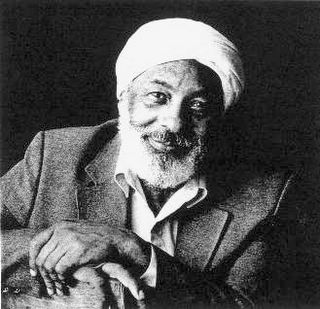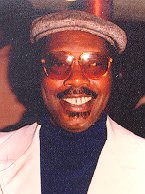A Review
As I mentioned earlier, I went to an advance screening of the film documentary, Make It Funky!, here in Lafayette back on April 26. This was sponsored by the Recording Academy (NARAS, you know, the Grammy award people), which also hosted several showings of the film in New Orleans later in the week. Following the film, the director, Michael Murphy, took questions from the audience, including one from your intrepid (or is that insipid?) reporter. Stick with me, and I’ll get to that “(?)”.
Around two hours in length, the film still felt short to me, as it covered a lot of musical and cultural ground, seeking to reveal the essence of what makes New Orleans music unique and valuable. It intersperses pithy interview segments with local notables (Cosimo Matassa, Allen Toussaint, Earl Palmer, to name a few) and non-locals (Bonnie Raitt, Keith Richards, and Ahmet Ertegun, for example), with archival footage and live performances filmed last year at a six hour concert at the Saenger Theatre in New Orleans. To his great credit, Murphy has edited a massive amount of material down to a film with a running time suitable for theatrical release and yet still interesting and coherent. Of course, in doing so, much of the story and music is left in the cutting room. And yet, his feature should give those who know precious little about New Orleans music a palatable dose of education mixed with good entertainment. Murphy promises a later DVD release that will include at least some of what he had to leave out, even hinting that he might present the many hours of interviews he conducted in book form at some point.
In an inspired choice, Murphy enlisted Art Neville of the original Meters and currently of the Funky Meters and Neville Brothers bands, whose performing and recording career goes back to the 1950’s, to narrate the film. It’s an enlightening pleasure to hear about the music of New Orleans from Art and some of the other people who made it happen.
While the concert performances are all very good in quality and sound, my problem with the film is in these segments. Most of the performers are backed by a stage band, which I assumed would be all New Orleans players, as well they should be, seeing as the focus of the film is what makes that special hometown vibe happen. As the concert footage started, I couldn’t identify the drummer on stage. When Earl Palmer, an absolute HOTG drum saint, sat in on drums for a song, the other drummer stayed on stage playing, too. Then I realized who he was, Steve Jordan (also an interviewee), a great drummer, mind you, but definitely NOT a certified New Orleans player. He wasn’t just sitting in; he was playing on most of the performances. Even though a couple of other local drummers were allowed to play on a certain songs, such as Willie Green’s performance with the Neville Brothers (the band he has been in for over 20 years), I had a disconnect with the film at that point.
Certainly, the average (non-geek) viewer would not have my reaction, or even realize what was going on But I found this non-sequitur odd and disingenuous to the spirit and thesis of the film. So, afterwards, when the applause was over and Mr. Murphy got up to take questions, I just had to inquire, “I was wondering why Steve Jordan was used as the drummer for most of the concert. As you well know, New Orleans is a town FULL of excellent drummers. Jordan is a great drummer, too; but why use an outsider for this film?”
Murphy’s seemed somewhat uncomfortable as he said that I had asked a good question, and then proceeded to explain that it was a “show business” decision. To get a distributor interested in the project, he said he had to have some “names” associated with the film. The outstanding New Orleans names wouldn’t do; so, he got Bonnie Raitt and Keith Richards in to talk and perform. When negotiating to get Richards on the project, Murphy was told by Keith’s “people” than Keith wouldn’t feel comfortable doing it unless Jordan participated. Thus, in order for the world to see a film purporting to represent was is good, true and funky about New Orleans music, the director had to chose not to use actual local drumming talent for much of the live music. The irony gushes from that concept.
As my friend and occasional blog contributor, Dwight Richards, said with just a smidge of exaggeration, when I told him this tale, “Man, you can throw a rock anywhere around here and hit a great drummer.” Yes, Dwight, they could have used a different hometown cat drumming on every song and not gone through them all. Those drummers literally make it funky. But that’s not what you’ll find in the concert footage of Make It Funky!, the movie . And that, my friends, is showbiz.
Am I being too much of a purist? Maybe. But I still don’t think this well-made documentary delivers completely on its promise. Others haven’t seemed to mind. Jan Ramsey, of OffBeat Magazine, referred to this film as having the potential to do for New Orleans music and musicians what The Buena Vista Social Club did for those of Havana. Wonderful thought, Jan. Glad you brought that up, because the only semi-well-known (non-local) “names” performing in that project were Ry Cooder, who instigated it, and his son, as I recall. And it seemed to work out famously, showcasing the actual musicians it set out to praise. While not a fatal flaw by any means, Murphy's taking some of the downhome funk out of Make It Funky!, just so Keith Richards could do a tune with the band and talk a bit about what New Orleans music means to him, is not really a fair trade off, since it compromises credibility and shows some disregard, even disrespect, for the local drumming community, sorry to say. At least, that’s the way it comes off to me.
With that caveat emptor, I urge you to go see Make It Funky! when it comes out this fall. Support and learn more about New Orleans music. When all is said and done, this film is still a touching, informative, enjoyable tribute to the Home of the Groove, despite the devil in the details.[
Update 06/03/2005: I have recently been furnished with a list of all the New Orleans drummers who participated on and/or performed in
Make It Funky! and the related concert. In fairness to them and Michael Murphy, the director, I wanted to show you the list (with my notes), since I did not have this information earlier:
Herman LeBeauf (works with Allen Toussaint)
Eddie Christmas (Big Sam’s Funky Nation– and a fave of mine lately)
“Mean” Willie Green (of the Neville Brothers, as I noted in the post)
Shannon Powell (a great addition to any group)
Herman Ernest (Dr. John’s band and many sessions)
Russell Batiste (of da Funky Meters and Orkestra from da Hood)
Bob French (many sessions in the '60’s–and still working, as far as I know!)
Earl Palmer
I have learned that, due to his poor health, Mr. Palmer requested that Steve Jordan also play drums when he sat in during the filmed concert last year.
Now, I still stand by my stated personal (purist geek) opinion about the use of Mr. Jordan on this project. But, in the bigger picture, it’s a minor quibble and has nothing to do with either Jordan’s spirited playing, or the fine work the director has done to bring myriad elements together into an impressive whole and to get the project into theatres. It’s an inspiring film; and I look forward to seeing it again when it is released. Hope you will support it, too.]














